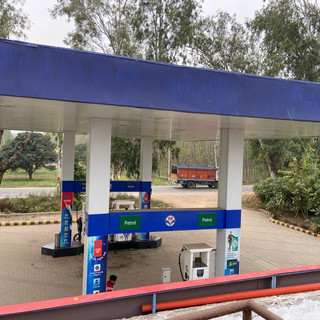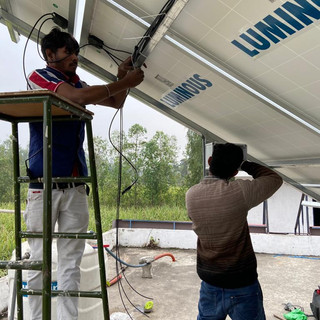Solar on Petrol Pump
- APOORV AGARWAL
- Jan 9, 2022
- 1 min read
Updated: Feb 23, 2022
Major loads of a petrol pump comprises of fuel dispensers which generally has a 1 Hp rating and office working loads such as fans, lights, and desktops. As majority of customers comes during the day, it becomes very feasible applying solar and cut electricity costs. Depending on the site and panel selection, applying solar can save 4-5 units per KW in a day.
One such installation was done on a HP Petrol pump in Baseda. (Shiv Filling Center)
Components of this solar set-up:-
Solar MPPT inverter 7.5 KVA/96V Luminous ( 1 nos.)
Solar Panels 330Wp Luminous ( 15 nos.)
Solar Battery 150 Ah ( 8 nos.)
DCDB box ( 1 nos.)
ACDB box ( 1 nos.)
Chemical Earthing ( 1 nos.)
GI structure and Installation
The solar 7.5KVA MPPT inverter has a load capacity of 6 KW and is 30% more efficient than a PWM inverter. It also extract solar energy in rainy and cloudy days as well.
Solar battery has C10 rating which provides 20% more back-up than a C20 rating battery of same capacity.
DCDB and ACDB boxes serves as protection against high electric surges and comprises of MCB’s, SPD’s and Isolator.
Chemical Earthing is required to protect solar panels from damaging during a thunderstorm lightning.
Cost Estimate:-
This set-up costs approx. INR 3,85,000/- and helps save 20-25 units in a day.










Integrating solar energy on petrol pumps is an innovative way to reduce costs and environmental impact. Solar panels can power station operations while promoting sustainable energy use. While modern fuel stations focus on efficiency, mistakes like putting Petrol in Diesel in vehicles remain common. In the UK, professional services such as Petrol in Diesel UK offer fast solutions for petrol in a diesel car problems, ensuring engines are safely restored. Drivers can book assistance via petrolindieseluk.co.uk. Combining clean energy initiatives with proper fuel management ensures vehicles run efficiently and pumps operate sustainably. Awareness and access to corrective services protect both the environment and drivers’ investments, keeping the system safe, reliable, and efficient.